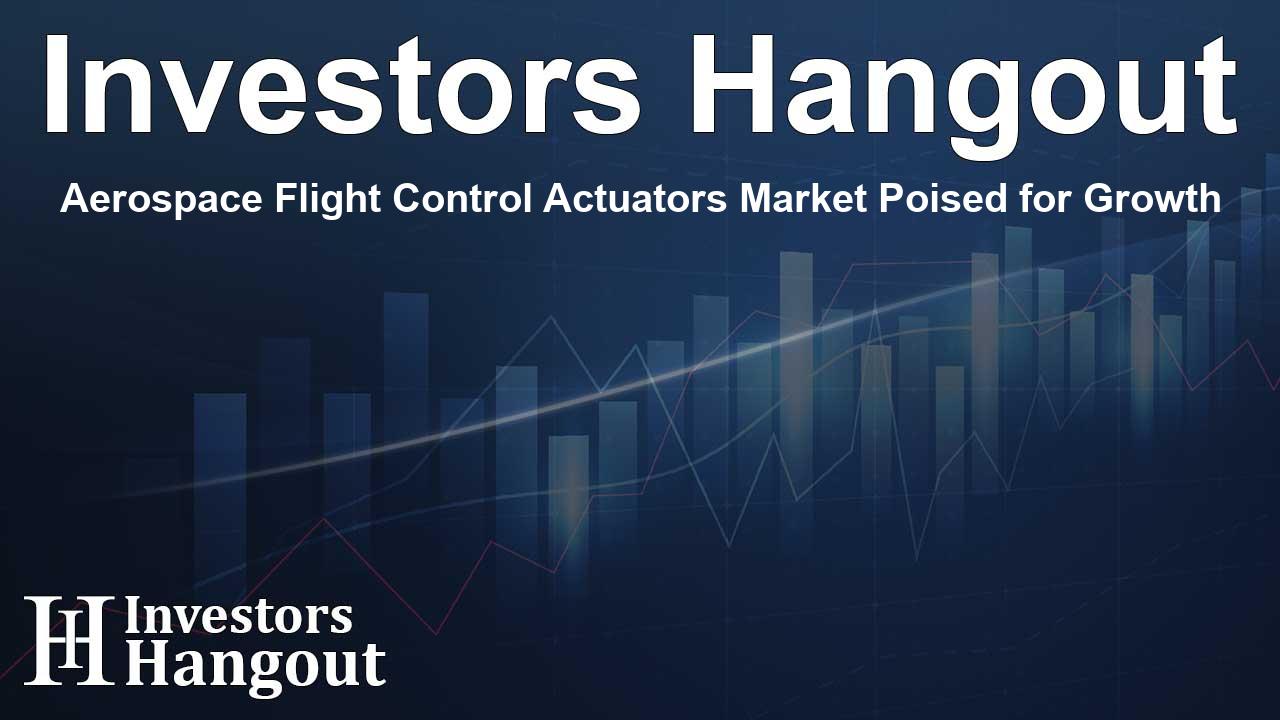Aerospace Flight Control Actuators Market Poised for Growth

Insights into the Aerospace Flight Control Actuators Market Growth
The aerospace flight control actuators market is experiencing dynamic growth, with expectations of reaching a remarkable US$7.0 billion by 2034 from a valuation of US$4.9 billion in 2024. This marks a consistent compound annual growth rate (CAGR) of 3.4% during the projected period. Leading the analysis is Stratview Research, which highlights vital trends and opportunities shaping the future of this essential market.
Key Market Dynamics and Trends
As we delve deeper, several insights reveal the underlying drivers for this growth. A significant factor is the expected surge in the production rates of popular aircraft models such as the A320neo and the B737 Max. Particularly, the ongoing development of new aircraft programs, such as the COMAC C919, is likely to further fuel demand in the aerospace sector. Additionally, the increasing electrification of aircraft combined with innovations in actuator technology play pivotal roles in shaping the market’s trajectory.
Commercial Aircraft: Leading the Way
Commercial aircraft platforms are set to maintain dominance in the aerospace flight control actuators market. The longevity and performance of established aircraft programs, including the A350 and B787, is a primary factor. Underlining this growth, projections indicate that nearly 43,975 new commercial aircraft are expected to be delivered globally by 2043, showing substantial potential for actuator demand in the upcoming decades.
Market Segmentation Insights
The aerospace flight control actuators market encompasses several key segments, each contributing uniquely to overall growth. We categorize this market based on platform type, actuator type, actuator technology, and end-user type.
Primary Flight Control Actuators
Within actuator types, primary flight control actuators are notably pivotal, as they are integral to the core operations of an aircraft, responsible for movements like roll, pitch, and yaw. The reliability of these components is further emphasized by their wide application in both commercial and military aviation sectors. Technological advancements, particularly in fly-by-wire systems, have bolstered their importance, ensuring they remain the market's leading component.
Dominance of Hydraulic Actuators
Examining actuator technology, hydraulic systems are projected to sustain dominance due to their efficiency and reliability. These actuators require less weight and space while effectively managing the considerable power necessary for operating flight controls. However, electric actuators, due to their high efficiency and superior control, are anticipated to capture a growing share of the market and may eventually replace traditional hydraulic systems in some applications.
The Competitive Landscape
The competitive landscape of the aerospace flight control actuators market showcases a mixture of regional and global players striving for leadership. Key companies have been identified to include Moog Inc., Collins Aerospace, and Parker Hannifin Corporation, all of whom are making significant strides to enhance their market presence through mergers and acquisitions, underscoring the high-stakes nature of this industry.
Opportunities for Growth in North America
North America is poised to remain a powerhouse in the aerospace flight control actuators market, driven by its status as a manufacturing hub within the aircraft industry. The USA is expected to uphold this momentum, supported by its dominance in aircraft production, housing numerous manufacturers and suppliers.
Additionally, the Asia-Pacific region is projected to experience significant growth, bolstered by increasing demand for commercial aircraft driven by the rise of passenger traffic and the establishment of major assembly plants.
Conclusion and Future Outlook
In conclusion, the aerospace flight control actuators market is set for a robust expansion trajectory over the next decade, driven by increasing aircraft production, electrical innovations, and consistent demand within commercial aviation. Stakeholders in the industry must remain vigilant to capitalize on growth opportunities as the market evolves. Continuous advancements in technology and the entry of new aircraft programs will further shape this landscape, presenting novel opportunities for both established and emerging players alike.
Frequently Asked Questions
What drives growth in the aerospace flight control actuators market?
Key drivers include increasing aircraft production rates, new aircraft programs, and advancements in actuator technology.
Which platform type leads the aerospace flight control actuators market?
Commercial aircraft is expected to remain the leading and fastest-growing platform type during the forecast period.
How significant are primary flight control actuators?
Primary flight control actuators are crucial for regulating an aircraft's movements, making them essential in both commercial and military applications.
What is the anticipated market size by 2034?
The aerospace flight control actuators market is projected to reach US$7.0 billion by 2034.
How does North America rank in the market?
North America is forecasted to dominate the market due to its strong manufacturing base in the aircraft industry.
About The Author
Contact Riley Hayes privately here. Or send an email with ATTN: Riley Hayes as the subject to contact@investorshangout.com.
About Investors Hangout
Investors Hangout is a leading online stock forum for financial discussion and learning, offering a wide range of free tools and resources. It draws in traders of all levels, who exchange market knowledge, investigate trading tactics, and keep an eye on industry developments in real time. Featuring financial articles, stock message boards, quotes, charts, company profiles, and live news updates. Through cooperative learning and a wealth of informational resources, it helps users from novices creating their first portfolios to experts honing their techniques. Join Investors Hangout today: https://investorshangout.com/
The content of this article is based on factual, publicly available information and does not represent legal, financial, or investment advice. Investors Hangout does not offer financial advice, and the author is not a licensed financial advisor. Consult a qualified advisor before making any financial or investment decisions based on this article. This article should not be considered advice to purchase, sell, or hold any securities or other investments. If any of the material provided here is inaccurate, please contact us for corrections.
